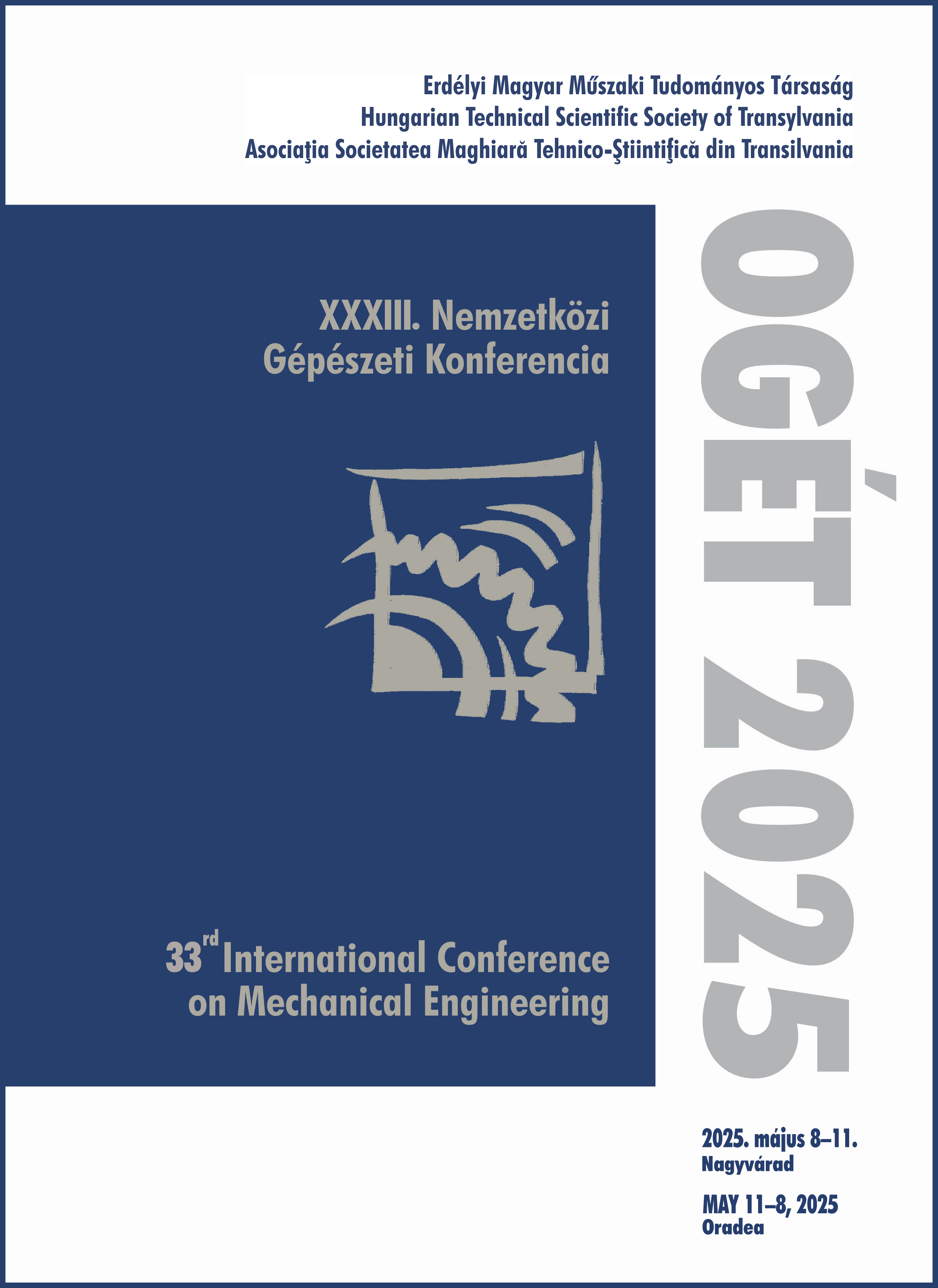Gyógyszerkiülepedés numerikus szimulációja realisztikus gyerek felsőlégúti modellekben
Investigation of drug deposition in realistic pediatric oral airway models using numerical methods
Keywords:
CFD, drug delivery, inhaled aerosol, particle deposition, /, gyógyszeradagolás, belélegzett aeroszol, részecske kiülepedésAbstract
In the case of inhaled medicines, it is particularly important that the medicine released from the inhaler does not settle in the upper airways but reaches the lower airways. The amount of medicine that reaches the lower airways depends on factors such as the geometry of the patient’s airways. that reaches the lower airways depends on factors such as the geometry of the patient’s airways. The mouth and throat are one of the most important areas, as this is where the velocity of inhaled air is highest. In children, there are few CT scans and geometries available to study individual parameters. One possible solution would be to use scaled adult airway geometries. To determine the applicability, the flow field and particle deposition in a characteristic child and a realistic adult geometry are compared.
Kivonat
Az inhalációs gyógyszerek bejuttatása során különösen fontos, hogy az pipából kijutó gyógyszer ne a felső légúton ülepedjen ki, hanem lejusson a tüdőhörgőkbe. A hörgőkbe lejutó gyógyszermennyiség többek közt függ a beteg légútjának geometriájától. Az egyik legmeghatározóbb szakasz a szájüreg és a torok, hiszen itt a legnagyobb az inhalált levegő sebessége. Gyerekek esetében az egyénfüggő paraméterek vizsgálatára kevés CT (computed tomography) felvétel és geometria áll rendelkezésre. Erre egy lehetséges megoldást jelentene skálázott felnőtt légútgeometriák használata. Az alkalmazhatóság megállapítása érdekében egy karakterisztikus gyerek és egy realisztikus felnőtt geometriában kialakuló áramlási tér és részecskekiülepedési kép kerül összehasonlításra.
References
Rdd online - aerosol testing equipment. Online; accessed 5 March 2025.
Warren H. Finlay. Chapter 2 - particle size distributions. In Warren H. Finlay, editor, The Mechanics of Inhaled Pharmaceutical Aerosols (Second Edition), pages 5–19. Academic Press, London, second edition edition, 2019.
L. Golshahi and W. H. Finlay. An idealized child throat that mimics average pediatric oropharyngeal deposition.
Aerosol Science and Technology, 46(5):i–iv, 2012.
L. Golshahi, M.L. Noga, and W.H. Finlay. Deposition of inhaled micrometer-sized particles in oropharyngeal airway replicas of children at constant flow rates. Journal of Aerosol Science, 49:21–31, 2012.
Werner Hofmann. Modelling inhaled particle deposition in the human lung—a review. Journal of Aerosol Science, 42(10):693–724, 2011.
Emily L. Kolewe, Saurav Padhye, Ian R. Woodward, Yu Feng, Jenna W. Briddell, and Catherine A. Fromen. A pediatric upper airway library to evaluate interpatient variability of in silico aerosol deposition. AAPS PharmSciTech, 24:1–13, 8 2023.
P. Koullapis, S.C. Kassinos, J. Muela, C. Perez-Segarra, J. Rigola, O. Lehmkuhl, Y. Cui, M. Sommerfeld, J. Elcner,
M. Jicha, I. Saveljic, N. Filipovic, F. Lizal, and L. Nicolaou. Regional aerosol deposition in the human airways: The siminhale benchmark case and a critical assessment of in silico methods. European Journal of Pharmaceutical Sciences, 113:77–94, 2018. A special issue dedicated to COST Action SimInhale: cross-disciplinary perspective on the current state of the art and challenges in pulmonary drug delivery.
B.L. Laube, H.M. Janssens, F.H.C. de Jongh, S.G. Devadason, R. Dhand, P. Diot, M.L. Everard, I. Horvath,
P. Navalesi, T. Voshaar, and H. Chrystyn. What the pulmonary specialist should know about the new inhalation therapies. European Respiratory Journal, 37(6):1308–1417, 2011.
Hideo Nakada, Tohru Aomori, and Mayumi Mochizuki. Effect of a lever aid on hand strength required for using a handheld inhaler correctly. International Journal of Pharmaceutics, 596:120249, 2021.


